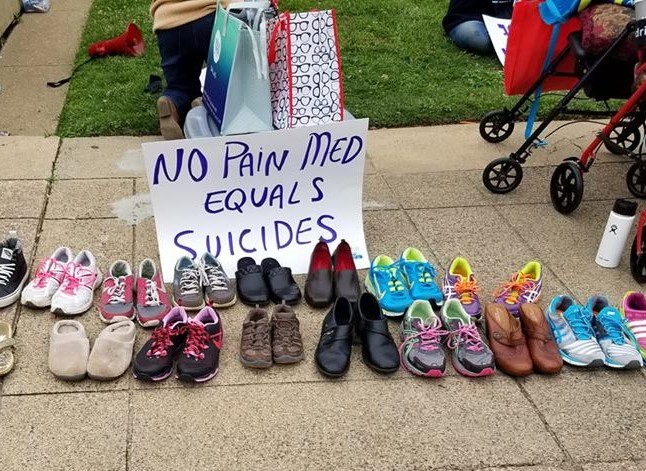Rescheduling Hydrocodone May Have Increased Abuse
/By Pat Anson, Editor
Four years ago that the U.S. Drug Enforcement Administration ordered the rescheduling of hydrocodone from a Schedule III controlled substance to the more restrictive category of Schedule II. The move was intended to reduce the diversion and abuse of hydrocodone, which at one time was the most widely prescribed drug in the United States.
It turns out the rescheduling may have had the unintended effect of increasing the diversion and abuse of opioid medication by elderly Americans.
According to a new study by researchers at the University of Texas Medical Branch (UTMB), hydrocodone prescriptions for Medicare beneficiaries declined after the rescheduling, but opioid-related hospitalization of elderly patients increased for those who did not have a prescription for opioids.
"The 2014 federal hydrocodone rescheduling policy was associated with decreased opiate use among the elderly," said lead author Yong-Fang Kuo, PhD, a professor of Preventive Medicine and Community Health at UTMB.
"However, we also observed a 24 percent increase in opioid-related hospitalizations in Medicare patients without documented opioid prescriptions, which may represent an increase in illegal use."
Kuo and her colleagues say Medicare beneficiaries are among the largest consumers of prescription opioids. They speculated that opioid abuse by the elderly may be a coping mechanism to deal with poor health and depression, and that opioid diversion may be a sign of drug dealing.
“An economic purpose may relate to monetary gains from the diversion and sale to others,” Kuo wrote. “It is important for prescribers to understand that their elderly Medicare beneficiaries might be obtaining opioids from sources that are not documented in their medical records. There is a need for additional research on why, where, and how these Medicare enrollees are obtaining opioids.”
The UTMB research team analyzed a large sample of Medicare Part D enrollment and claims data from 2012 through 2015. Their study was published in the Journal of the American Geriatrics Society.
The reclassification of hydrocodone to a Schedule II controlled substance limited patients to an initial 90-day supply and required them to see a doctor for a new prescription each time they need a 30-day refill. Prescriptions for Schedule II drugs also cannot be phoned or faxed in by physicians.
In 2012, over 135 million prescriptions were written in the U.S. for hydrocodone products such as Vicodin, Lortab and Norco. That fell to 90 million prescriptions by 2016.
Overall Opioid Prescribing Down
Hydrocodone isn't the only opioid medication to see steep declines in prescribing. The volume of opioid prescriptions filled last year dropped by 12 percent, the largest decline in 25 years according to a new report by the IQVIA Institute. Opioid prescriptions have been falling since 2011, while dispensing of addiction treatment drugs like buprenorphine (Suboxone) and methadone have risen sharply.
“The U.S. opioid epidemic is one of the most challenging public health crises we face as a nation," said Murray Aitken, IQVIA senior vice president and executive director of the IQVIA Institute for Human Data Science.
“Our research and analytics revealed that 2017 saw new therapy starts for prescription opioids in pain management decline nearly 8 percent, with a near doubling of medication-assisted therapies (MATs) for opioid use dependence to 82,000 prescriptions per month. This suggests that healthcare professionals are prescribing opioids less often for pain treatment, but they are actively prescribing MATs to address opioid addiction."
All 50 states and Washington DC had declines in opioid prescribing of 5 percent or more in 2017, with some of the states hardest hit by the opioid crisis -- like West Virginia and Pennsylvania -- showing declines of over 10 percent. Nevertheless, the number of Americans overdosing continues to rise due to increased use of black market drugs like illicit fentanyl, heroin and cocaine, which now account for about two-thirds of all drug deaths.



























